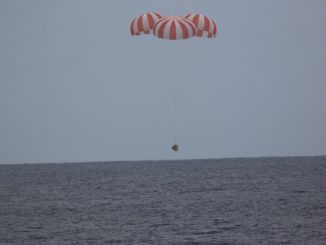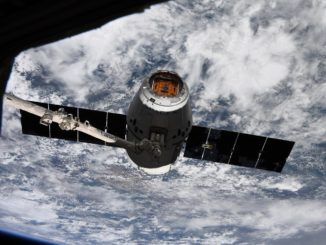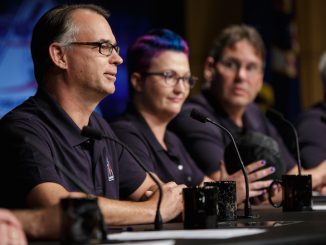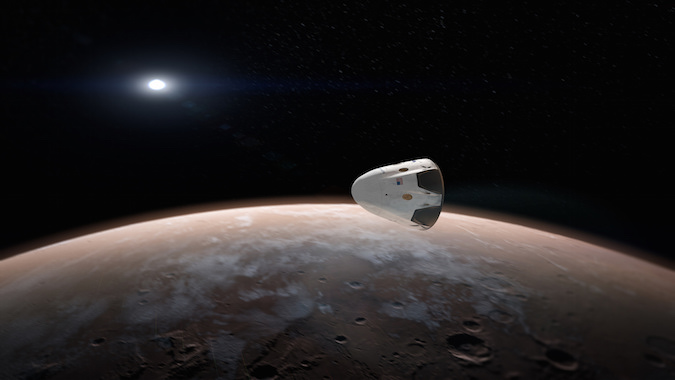
Expertise, input and advice from seasoned NASA engineers will improve SpaceX’s chances of nailing the first commercial landing on Mars as soon as late 2018, a senior space agency official said Wednesday, but Elon Musk’s space transport company will likely seek more independence from U.S. government support on later expeditions to the red planet.
While considered high risk by NASA standards, the Red Dragon Mars mission revealed by SpaceX in April has a “reasonable likelihood” of success, according to Phil McAlister, NASA’s director of commercial spaceflight development.
McAlister said NASA will act as a consultant to SpaceX on the Red Dragon project, the first of a series of Mars landers planned by the Hawthorne, California-based company. NASA’s participation will diminish in later missions, he said.
“NASA’s role is somewhat limited,” McAlister said in a conference call with space industry experts Wednesday. “We don’t have full insight into the overall mission design, nor should we.”
SpaceX plans multiple robotic Mars missions over the next decade leading up to a human expedition. It is all part of Elon Musk’s long-term vision to colonize Mars, a topic the business mogul plans to discuss in detail during a presentation at the International Astronautical Congress in Guadalajara, Mexico, next week.
The company’s first Mars mission — Red Dragon — is slated to launch from Cape Canaveral as soon as May 2018 aboard a Falcon Heavy rocket, SpaceX’s heavy-lift launcher that is now scheduled for its maiden flight in the first quarter of 2017.
SpaceX recently announced the Falcon Heavy’s debut will slip from later this year as the company investigates a major launch pad mishap Sept. 1 that destroyed a Falcon 9 rocket and its communications satellite payload.
Any impact from the accident on Red Dragon’s 2018 launch date — a schedule NASA officials already said was ambitious — is unclear.
Red Dragon will not carry any people — Dragon is not designed to transport astronauts all the way to Mars on its own — but it is based on the human-rated spaceship SpaceX is developing under the auspices of NASA’s commercial crew program to haul residents between Earth and the International Space Station.
Musk has hinted at a concept for an “Interplanetary Colonial Transporter” to ferry people from Earth to Mars and beyond. The system would be launched by a giant rocket that is still on the drawing board.
McAlister said SpaceX approached NASA in late 2015 seeking help with the Red Dragon mission, and the parties concluded an agreement in April. NASA is not providing any funds to SpaceX, but the agency is contributing labor and expertise valued at approximately $32 million over four years, according to Jim Reuter, deputy associate administrator for programs in NASA’s space technology mission directorate.
Reuter said in July that he estimates SpaceX is spending about 10 times more than NASA’s planned expenditure on Red Dragon, or roughly $300 million.
SpaceX has not said how much it is spending on Red Dragon, and McAlister did not offer his own cost estimate Wednesday.
“NASA’s participation, the way SpaceX characterized it, is it was highly desired, but it was not enabling necessarily,” McAlister said. “Our participation, we believe, will increase the likelihood that it will be successful, and SpaceX agrees with that, too… But SpaceX could eventually do all this on their own.”
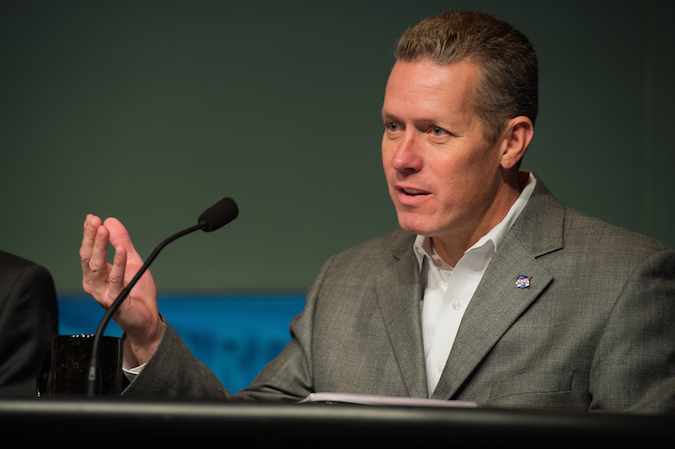
The Red Dragon spacecraft will weigh between 8 and 10 tons when it lands, Reuter said in July, up to ten times heavier than the Curiosity rover, largest vehicle ever to reach the Martian surface.
A new type of landing system is needed to accommodate the leap in mass, replacing braking parachutes with rocket engines.
NASA engineers believe supersonic retro-propulsion, using thrust from large rocket engines to do the parachute’s job, is the best way to deliver hefty spacecraft to the Martian surface. The Red Dragon spacecraft’s SuperDraco thrusters, mounted in pairs on four pods outside the capsule, will ignite at supersonic speed after the ship passes through the hottest part of its entry into Mars’ atmosphere.
Landing legs should deploy just before the craft settles onto Martian soil.
McAlister said all of NASA’s concepts for placing large habitats and crews on Mars employ supersonic retro-propulsion, a capability already demonstrated by SpaceX in Earth’s atmosphere during recoveries of the company’s large Falcon 9 first stage boosters.
NASA needs data on how supersonic retro-propulsion works at Mars before sending people there, and McAlister said the Red Dragon partnership will give NASA the results it needs “at least a decade sooner and at a small fraction of the cost” than if the agency developed its own mission.
“We don’t even have a mission on the books, so it’s not even clear how long it would take, but certainly at least a decade,” McAlister said.
“They like to get 80 percent of the answers sooner, as opposed to getting 95 percent of the answers later,” McAlister said of SpaceX. “They’ve got a desire to get on with this.”
Earlier this year, Musk said SpaceX intends to send a robotic mission to Mars during every launch opportunity. Mars launch windows come about every 26 months when the planets are properly positioned in their orbits.
“SpaceX’s goal is to increase their independence from NASA on each mission as fast as possible,” McAlister said. “The heaviest reliance will obviously be on this first mission.
“How fast that happens is completely to be determined,” McAlister said. “We’ll have to see, but I would suspect future campaigns to be potentially more independent as we go forward.”
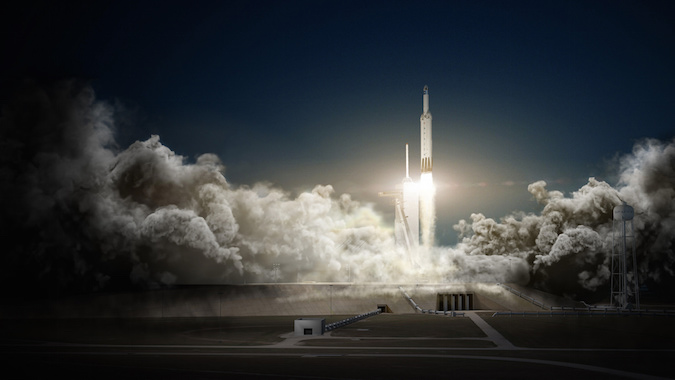
NASA will provide deep space communications support to Red Dragon through a network of dish antennas in California, Spain and Australia, and experts at the Jet Propulsion Laboratory will provide navigation solutions to help plot the spacecraft’s trajectory.
Government engineers will give advice to SpaceX on the capsule’s entry, descent and landing at Mars, the design of the spacecraft and its heat shield, and the aerodynamic environment in the rarefied Martian atmosphere.
“In return, we are receiving most of SpaceX’s EDL (entry, descent and landing) flight data,” McAlister said. “This is a critical, critical technology for us. This is flight data that would not be available for us by any other means.”
NASA is also charged with advising SpaceX on planetary protection and the steps required to ensure the Dragon capsule does not contaminate Mars with Earth-based microbes, which could ruin future research into potential extant or past life there.
McAlister said the government is still working on a plan to certify or approve commercial spacecraft for landings on other planets. The Red Dragon mission is “charting new territory” in planetary protection requirements and oversight authority, he said.
“The paradigm for approving this mission is still somewhat immature,” he said. “It’s not necessarily NASA’s role to approve that. It is the responsiblity of the U.S. government. We are still working out the roles and responsibilities among the various agencies.”
NASA, the Federal Aviation Administration and the U.S. State Department might be involved in that process, he said.
SpaceX and NASA are also discussing whether Red Dragon could fly with research instruments, such as payloads to demonstrate how future astronauts could live off resources in the Martian environment.
McAlister said NASA would not share data on the Red Dragon’s performance during entry, descent and landing, but lessons learned could improve the agency’s computer models.
“This has never been done before — putting a large mass into the Mars atmosphere using supersonic retro-propulsion,” McAlister said.
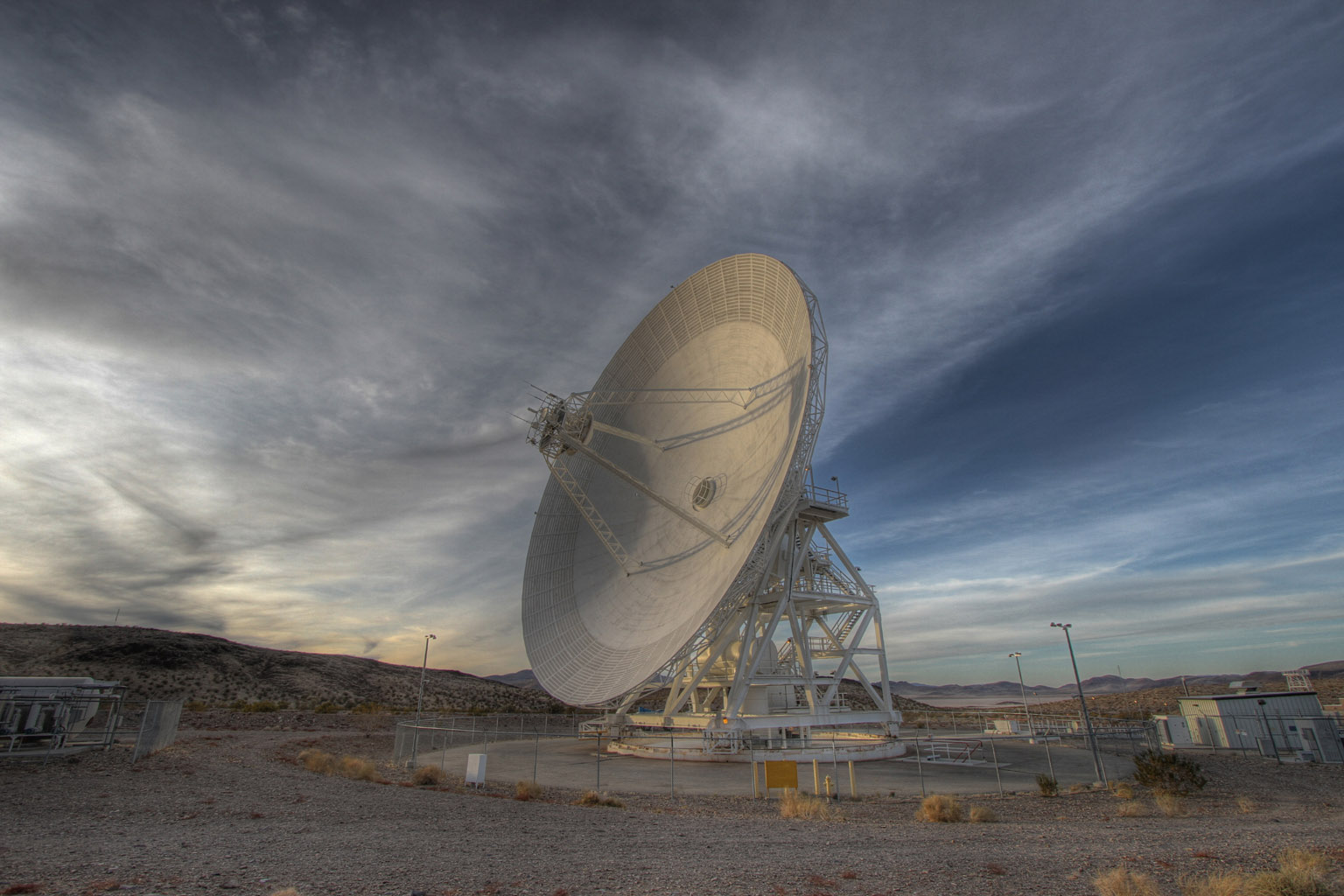
NASA aims to put human crews in orbit around Mars by the mid-2030s.
Two keystones of that plan are the Space Launch System heavy-lift rocket and Orion crew capsule. NASA may procure commercially-built habitats and electric propulsion units for the half-year trips to and from Mars.
McAlister said he sees SpaceX’s Mars efforts as vital to NASA’s “Journey to Mars,” an often-repeated tagline that permeates the space agency’s communications and public relations campaigns.
“We need efforts of all U.S. capabilities, NASA and the private sector, if we’re going to be successful on our ‘Journey to Mars,'” he said Wednesday. “We’re going to Mars as a nation. It’s not just NASA’s journey. It’s U.S.-led, but (it’s) even an international journey.
“I think redundancy — multiple capabilities to do even the same thing — I see that as a feature, not a bug,” McAlister said. “We’ve seen through crew, and particularly cargo, to the International Space Station (that when) one system goes down and another system can do the same thing, that is a strength.
“I don’t believe in having one uber czar in charge of a specific technology or a specific capability.”
SpaceX’s own privately-developed Mars exploration plan would rely on the company’s own rockets and spaceships, plus other systems expected to be revealed by Musk on Sept. 27.
“SLS has got its own unique mission,” McAlister said. “It’s a very difficult mission. It’s going to be one of the biggest launch vehicles ever built, and we’re going to need that if we do deep space exploration.”
Email the author.
Follow Stephen Clark on Twitter: @StephenClark1.

